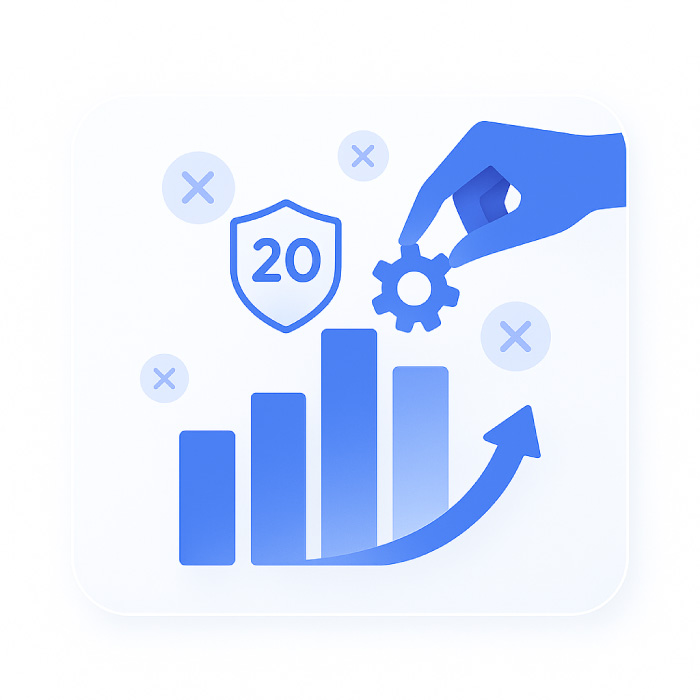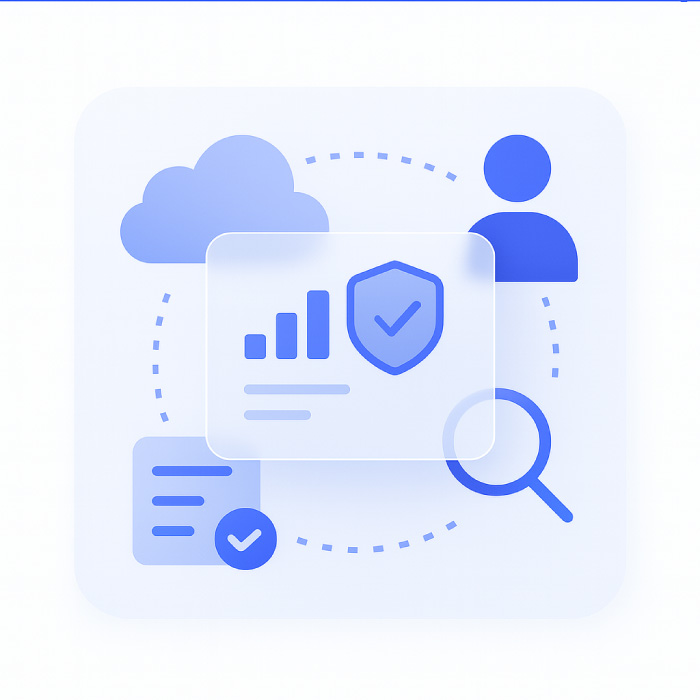Modern financial reporting – How to master 20 years of data and leverage it for better decision making
Area of collaboration
System optimization
Industry
Energy
Tools
Benefits of the implementation
Restored complete data control
Comprehensive technical documentation
Eliminated critical system errors
Automated key processes
Enhanced operational security
Achieved reporting transparency
About the client
One of the world’s largest global energy corporations with decades of presence in the Polish market, operating across more than 130 countries. The company delivers a comprehensive portfolio of energy products and services, spanning from traditional fuels to cutting-edge renewable energy solutions.
THE CHALLENGES
Two decades under one expert's control
Financial reporting serves as the backbone of organizational decision-making, yet one of the most significant challenges emerges when key personnel leave, taking with them all institutional knowledge about how systems actually function. This case study chronicles our IBM Cognos Analytics optimization project for an organization that had built its reporting infrastructure over 20 years under the guidance of a single expert. When he departed, no one understood how their primary analytical tool truly operated.

Complete lack of documentation
The system suffered from undocumented dependencies between components and missing descriptions of calculation rules and business logic. This represented a hidden cost that became painfully evident whenever system modifications were attempted.
High-risk modifications
Every report change felt like navigating a minefield – requiring extensive time while carrying substantial error risk. The team remained uncertain about the potential consequences of seemingly straightforward modifications.
Cascade of system failures
A single database error could trigger a domino effect of problems throughout the entire reporting ecosystem. When one component failed, it paralyzed the entire analytical infrastructure
Loss of system control
Users couldn’t understand how their reports functioned or determine their reliability. The finance team worked with data whose accuracy they couldn’t verify or control.
SOLUTION APPROACH
How we solved our client's problem?
The project demonstrated that systematic documentation and team knowledge sharing form the foundation of effective reporting, regardless of the technology platform employed.
Step 1
Business knowledge recovery – We collected and documented comprehensive knowledge about reporting logic while eliminating the risk of system paralysis during future personnel transitions.
Step 2
Reporting process standardization – We established standards enabling effective team collaboration and consistent system management.
Step 3
System continuity assurance – We implemented mechanisms for easy tracking and maintenance of system changes going forward.
Understanding the domino effect: How single failures paralyze entire system?

Critical system sependencies
One data warehouse error meant complete reporting paralysis – empty spreadsheets, missing data, and inability to publish financial results.

Business continuity impact
Technical failures directly blocked organizational decision-making processes. The finance team couldn’t perform their fundamental operational responsibilities.
ROZWIĄZANIE
Regaining control over data
Our approach focused on systematically reconstructing system knowledge while eliminating primary problem sources. We conducted a thorough audit of the entire environment, documenting every analytical infrastructure element, then optimized critical processes and developed a strategic development plan.
Complete Cognos Analytics environment audit
We reconstructed a comprehensive dependency map between data sources, models, and reports. Every system connection was identified and thoroughly documented.
Data lineage implementation
We applied data lineage methodology to precisely trace data origins in each report and track processing at every stage. This proved crucial for our comprehensive audit process.
Error source elimination
We analyzed the complete data processing pipeline from data warehouse through ETL processes to final reports. We identified and resolved critical failure points that previously caused system-wide domino effects.
Financial year change automation
We eliminated manual editing requirements for dozens of reports during each financial year transition. The system was adapted to automatically handle accounting period changes, saving significant time while dramatically reducing error risk.
Comprehensive technical documentation
We created detailed system documentation that restored complete client control over their data assets.
Strategic improvement recommendations
We developed detailed recommendations for simplifying processing chains, relocating appropriate logic to the data warehouse, and implementing further system optimizations.

The transformative results
Accelerated decision-making processes
Teams can now make decisions faster through stable data access without delays or system failures disrupting critical operations.
Enhanced transparency and control
Reports are no longer mysterious "black boxes". Everyone understands their functionality and can trust their outputs. We established clear procedures and consistent work standards.
Operational security
Key expert departures no longer paralyze company operations. The finance team has confidence in data quality and can work independently without system dependencies.
Strategic development roadmap
The organization received comprehensive recommendations for optimization and automation next steps, providing clear direction for continued system evolution.
Building reporting systems that survive team changes
Here are four essential lessons from our project recovering control over a 20-year-old IBM Cognos Analytics system. These principles help prevent situations where finance teams lose control of critical analytical tools when key experts leave.
1.
Documentation as foundation, not afterthought
Documentation must be created alongside system development, not retroactively.
Every business rule, data dependency, and calculation logic requires documentation from the beginning in terms the entire team can understand. Without this foundation, systems become “black boxes” that no one can maintain effectively.
2.
2. Team-based knowledge, not individual ownership
No single person can be the sole “owner” of system knowledge.
Organizations must establish rules ensuring every system element is understood by at least two people. Code reviews, paired report creation, and regular knowledge-sharing sessions are fundamental. One person’s departure cannot paralyze the entire organization.
3.
Design failure-resistant architecture
Systems must be designed so single errors don’t trigger cascading failures.
Business logic should be concentrated in data warehouses rather than scattered across reports. Framework Manager in IBM Cognos Analytics centralizes business definitions and conceals multiple data source complexity behind one coherent metadata model. Control points and failover mechanisms should enable system functionality even during partial data source failures.
4.
Automate routine processes
Anything performed manually more than once should be automated.
Processes like financial year changes, parameter updates, and cyclical report generation must be designed as automatic from day one. Manual work creates error sources and development bottlenecks that limit system scalability and reliability.
Explore more success stories
Ready to see how we’ve helped other organizations transform their financial processes? Check out these additional case studies showcasing different challenges and innovative solutions across various industries.

Financial analysis as the key to continued business success of an e-commerce giant
How one of Poland's largest e-commerce platforms cut their month-end closing time by 50% through automated financial planning.
See more

Optimizing volume and price planning in a global manufacturing environment
How an international manufacturer transformed chaotic quarterly planning from weeks of manual work to real-time decisions in minutes.
See more
Automation of consolidation processes in one of the largest Polish companies in the gaming industry
How Poland's largest gaming company automated their consolidation processes to eliminate manual errors and accelerate reporting cycles.
See more
CONTACT
Let's talk about your project
Get in touch with us via this form, email, or phone. We’ll answer your questions, discuss the key challenges, and suggest initial solutions tailored to your needs.
